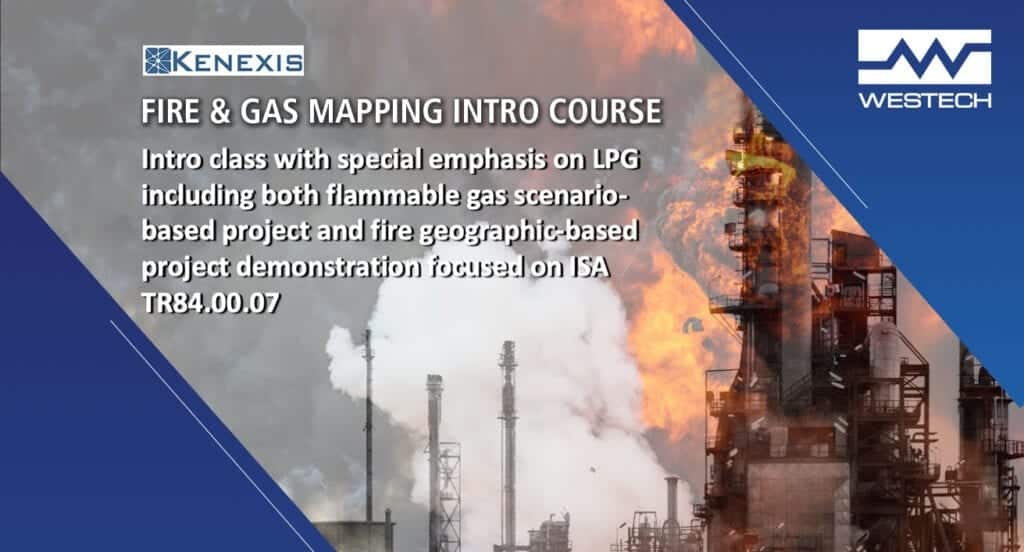FIRE & GAS MAPPING INTRODUCTORY COURSE

Emphasis on Liquefied Petroleum Gas (LPG)
Sign up for this very popular Fire & Gas Mapping introductory class with a special emphasis on Liquefied Petroleum Gas (LPG) available to those for just $95.00. To register for the course go to https://bit.ly/2JcSNxj.
- Introduction class to fire and gas mapping using performance-based analysis for coverage assessments.
- This class has a special emphasis on LPG storage based on a substantial accident.
- The class is composed of classroom-type training followed by a project-based session to demonstrate the material covered in class.
- Class includes both flammable (or toxic) gas scenario-based and fire geographic-based project work.
- Class and exercise/demonstration are focused on ISA TR84.00.07.Find out about Westech Industrial’s Kenexis software packages available in Canada by visiting our website at https://bit.ly/2UuEAhh or call to speak to one of our representatives at 1-800-912-9262.
Many industries utilize flammable gases that are held as a liquid under pressure, but if released into the atmosphere, they will flash to vapour in a short period of time. The most common of these chemicals are generically referred to as Liquefied Petroleum Gas (LPG), and most consist of propane and butane, and mixtures that primarily consist of these components. These chemicals are used for a variety of purposes ranging from consumption as fuels to feedstocks for a range of refining and petrochemical processes. While the flammable hazards of these chemicals are well known and well understood, recent events have caused many users of these chemicals to reconsider the range of safeguards that they employ to ensure the tolerability of risk associated with equipment containing these chemicals.
Process industries that utilize large quantities of LPG include petrochemicals and refining. For instance, in an oil refinery, LPG can be found in the following units Crude Unit, Gas Plant, Naphtha Reforming, FCC, Coking, Alkylation, along with tank farm storage areas. In general, petrochemicals and refining utilize fire and gas detection equipment to a lesser degree than other industries like offshore oil and gas production. The reason for less reliance on Fire and Gas Systems (FGS) is related to factors that have historically made these industries less risky, including:
- less congestion making it less likely a vapour cloud explosion occurs instead of a flash fire,
- Greater spacing of equipment items and lower density of equipment and personnel, and
- easier egress from the process area in the case of an emergency. As a result of these factors, petrochemical plants and petroleum refineries use FGS in limited applications.
Furthermore, safety and risk assessments that are used in these industries do not credit FGS with any measurable amount of risk reduction. Most of the industry utilizes an approach that includes qualitative HAZOP and semi-quantitative LOPA.
Fire & Gas Mapping
Kenexis is a pioneer in the performance-based placement of fire detectors and gas detectors in the process industries, starting with their strong involvement of the ISA technical reports, premier technical safety consulting services, and best-in-class fire and gas mapping software – Effigy. Beyond their work with the standards committee, they have also developed the premier training course on fire and gas mapping, which is distributed through ISA as EC56P – Fire & Gas System Engineering – Performance-Based Methods for Process Facilities. We are also the authors of the only book available on fire and gas mapping, Performance-Based Fire and Gas Engineering Handbook (also published through ISA).
The process of determining the proper location and number of gas detectors is conceptually simple, but in application requires a lot of detailed work to be executed. Ultimately, one needs to generate a number of models that represent the dimensions of the gas clouds that would result from leaks in the equipment being protected. These models need to consider weather conditions (wind direction, speed, and atmospheric stability), release orientations, and release frequency. Then, each of the gas clouds needs to be assessed, one at a time, to determine if the gas cloud comes into contact with any of the proposed gas detectors. This analysis results in the calculation of scenario coverage, or what fraction of the releases (considering their relative frequencies) will be detected by a given array of detectors. This coverage assessment is compared against a numerical target (e.g., 80%) that is defined for the area based on the level of risk that it poses. As you can imagine, this is not a trivial amount of work, but it is definitely manageable, especially if sophisticated 3D computer tools are employed to do the heavy lifting.
Learn more at https://bit.ly/2UuEAhh or call to speak to one of our representatives at 1-800-912-9262.
